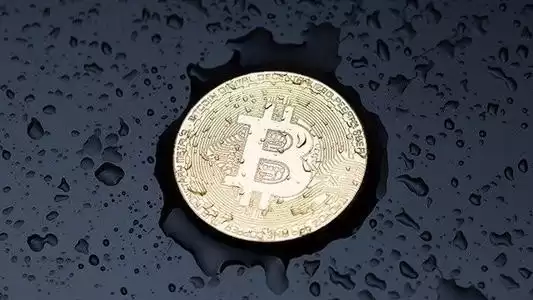-
 Bitcoin
Bitcoin $117800
0.49% -
 Ethereum
Ethereum $4432
0.55% -
 XRP
XRP $3.106
1.07% -
 Tether USDt
Tether USDt $1.001
0.01% -
 BNB
BNB $835.8
1.74% -
 Solana
Solana $189.1
2.72% -
 USDC
USDC $0.9999
-0.01% -
 Dogecoin
Dogecoin $0.2302
3.65% -
 TRON
TRON $0.3485
-0.69% -
 Cardano
Cardano $0.9212
-0.91% -
 Hyperliquid
Hyperliquid $46.97
1.45% -
 Chainlink
Chainlink $22.77
5.61% -
 Stellar
Stellar $0.4284
0.82% -
 Sui
Sui $3.766
2.82% -
 Bitcoin Cash
Bitcoin Cash $583.5
-0.82% -
 Ethena USDe
Ethena USDe $1.001
0.03% -
 Hedera
Hedera $0.2512
2.78% -
 Avalanche
Avalanche $24.18
2.27% -
 Litecoin
Litecoin $120.2
2.10% -
 Toncoin
Toncoin $3.450
1.96% -
 UNUS SED LEO
UNUS SED LEO $9.412
-0.92% -
 Shiba Inu
Shiba Inu $0.00001298
2.35% -
 Uniswap
Uniswap $10.99
3.75% -
 Polkadot
Polkadot $3.962
3.09% -
 Dai
Dai $1.000
0.00% -
 Bitget Token
Bitget Token $4.643
1.38% -
 Cronos
Cronos $0.1511
-0.08% -
 Ethena
Ethena $0.7246
3.18% -
 Monero
Monero $254.9
7.90% -
 Pepe
Pepe $0.00001100
3.32%
Short-term operation of Bitcoin contracts
Short-term operation of Bitcoin contracts involves speculating on the future price of Bitcoin without direct asset ownership, requiring careful platform selection and risk management strategies.
Nov 23, 2024 at 01:32 am

Short-Term Operation of Bitcoin Contracts
Introduction
Bitcoin contracts, also known as Bitcoin futures or Bitcoin perpetual swaps, are financial instruments that allow traders to speculate on the future price of Bitcoin without having to own the underlying asset. These contracts are traded on centralized exchanges and their prices are derived from the underlying spot market. Short-term Bitcoin contracts typically have a duration of less than one month and are used for intraday trading or short-term speculation.
Step 1: Choosing the Right Platform
The first step in short-term operation of Bitcoin contracts is choosing the right platform. There are several factors to consider when selecting a platform, including:
- Trading fees: The trading fees charged by an exchange can significantly impact your profits. Choose a platform with competitive trading fees, especially for short-term trading where the spread between the bid and ask price is narrow.
- Trading volume: The trading volume on an exchange is an indicator of its liquidity. High liquidity ensures that you can enter and exit trades quickly and at a fair price.
- Security: The security of the platform is paramount. Choose an exchange that has a proven track record of security and implements industry-best practices to protect user funds.
Step 2: Understanding the Contract Specifications
Once you have chosen a platform, you need to understand the contract specifications. These specifications include:
- Contract size: The contract size is the amount of Bitcoin represented by each contract. Choose a contract size that aligns with your trading style and risk tolerance.
- Margin requirements: Margin requirements are the amount of collateral you need to maintain in your account to trade a contract. Higher margin requirements reduce the leverage you have on your trade.
- Expiry date: The expiry date is the date on which the contract expires. Contracts that expire in the near future are typically more volatile than those with longer expiry dates.
Step 3: Opening and Managing Positions
To open a position in a Bitcoin contract, you need to place an order on the exchange. You can either place a market order, which will be executed at the current market price, or a limit order, which will be executed at a specified price.
Once you have opened a position, you need to manage it. This includes monitoring the market price and adjusting your position if necessary. You can also close your position at any time by placing an opposing order.
Step 4: Risk Management
Risk management is critical when short-term operating Bitcoin contracts. The high volatility of the Bitcoin market means that your profits can quickly turn into losses. Here are some risk management strategies:
- Set stop-loss orders: Stop-loss orders are designed to automatically close your position if the price moves against you by a certain amount. This helps limit your losses.
- Use leverage carefully: Leverage can amplify both your profits and losses. Use leverage wisely and only to the extent that you are comfortable with the risk.
- Don't trade with more money than you can afford to lose: This is the golden rule of trading. Never risk more money than you can afford to lose.
Step 5: Closing the Position
To close your position, you need to place an opposing order. This means selling your contract if you bought it or buying it back if you sold it. Once you have closed your position, you will realize your profit or loss.
Conclusion
Short-term operation of Bitcoin contracts is a complex but potentially lucrative trading strategy. It requires a good understanding of the market, the contract specifications, and risk management techniques. By following the steps outlined in this article, you can increase your chances of success.
Disclaimer:info@kdj.com
The information provided is not trading advice. kdj.com does not assume any responsibility for any investments made based on the information provided in this article. Cryptocurrencies are highly volatile and it is highly recommended that you invest with caution after thorough research!
If you believe that the content used on this website infringes your copyright, please contact us immediately (info@kdj.com) and we will delete it promptly.
- Kazakhstan's Crypto Leap: Bitcoin ETF and Central Asia's Digital Finance Future
- 2025-08-13 12:45:19
- BlockDAG Presale Blazes Past $371M: Fundraising Frenzy Fuels Crypto Sensation
- 2025-08-13 13:05:21
- Meme Coins: Chasing the 2025 Surge – Which Will Moonshot?
- 2025-08-13 10:25:23
- Bitcoin's Wild Ride: Rally, Pullback, and What's Next
- 2025-08-13 10:25:23
- Bitcoin, Bitmax, and Institutional Demand: A New Era of Crypto Investment
- 2025-08-13 10:45:12
- Solana, ROAM, and Airdrops: What's the Buzz in 2025?
- 2025-08-13 11:35:13
Related knowledge

Is it possible to adjust the leverage on an open position on KuCoin?
Aug 09,2025 at 08:21pm
Understanding Leverage in KuCoin Futures TradingLeverage in KuCoin Futures allows traders to amplify their exposure to price movements by borrowing fu...

What cryptocurrencies are supported as collateral on KuCoin Futures?
Aug 11,2025 at 04:21am
Overview of KuCoin Futures and Collateral MechanismKuCoin Futures is a derivatives trading platform that allows users to trade perpetual and delivery ...

What is the difference between realized and unrealized PNL on KuCoin?
Aug 09,2025 at 01:49am
Understanding Realized and Unrealized PNL on KuCoinWhen trading on KuCoin, especially in futures and perpetual contracts, understanding the distinctio...

What different order types are available to use on KuCoin Futures?
Aug 13,2025 at 11:35am
Understanding Order Types on KuCoin FuturesKuCoin Futures offers a comprehensive range of order types to accommodate different trading strategies and ...

How does KuCoin Futures compare against Binance Futures in terms of features?
Aug 09,2025 at 03:22am
Trading Interface and User ExperienceThe trading interface is a critical component when comparing KuCoin Futures and Binance Futures, as it directly i...

How can I manage risk when applying high leverage on KuCoin?
Aug 13,2025 at 11:35am
Understanding High Leverage and Its Implications on KuCoinHigh leverage in cryptocurrency trading allows users to control larger positions with a rela...

Is it possible to adjust the leverage on an open position on KuCoin?
Aug 09,2025 at 08:21pm
Understanding Leverage in KuCoin Futures TradingLeverage in KuCoin Futures allows traders to amplify their exposure to price movements by borrowing fu...

What cryptocurrencies are supported as collateral on KuCoin Futures?
Aug 11,2025 at 04:21am
Overview of KuCoin Futures and Collateral MechanismKuCoin Futures is a derivatives trading platform that allows users to trade perpetual and delivery ...

What is the difference between realized and unrealized PNL on KuCoin?
Aug 09,2025 at 01:49am
Understanding Realized and Unrealized PNL on KuCoinWhen trading on KuCoin, especially in futures and perpetual contracts, understanding the distinctio...

What different order types are available to use on KuCoin Futures?
Aug 13,2025 at 11:35am
Understanding Order Types on KuCoin FuturesKuCoin Futures offers a comprehensive range of order types to accommodate different trading strategies and ...

How does KuCoin Futures compare against Binance Futures in terms of features?
Aug 09,2025 at 03:22am
Trading Interface and User ExperienceThe trading interface is a critical component when comparing KuCoin Futures and Binance Futures, as it directly i...

How can I manage risk when applying high leverage on KuCoin?
Aug 13,2025 at 11:35am
Understanding High Leverage and Its Implications on KuCoinHigh leverage in cryptocurrency trading allows users to control larger positions with a rela...
See all articles

























































































